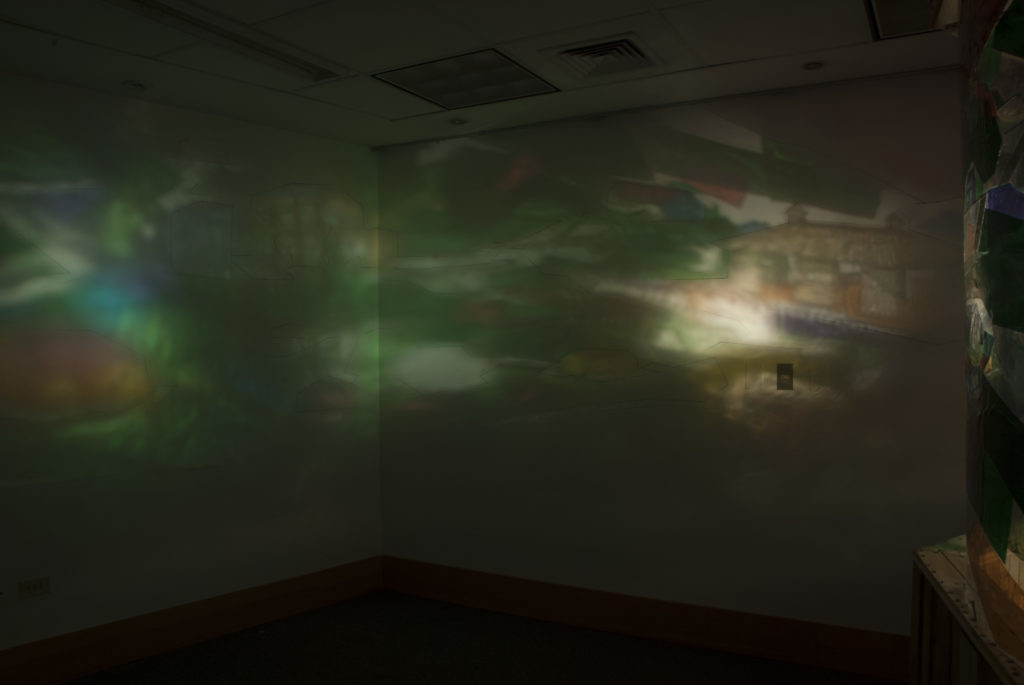
Prisoner’s Cinema is a kinetic installation. Three collage paintings constructed with lighting gels are projected onto the walls of the gallery. The paintings are built into a cylindrical device which functions as a lighthouse or magic lantern. The light at the centre of the structure rotates at 1rpm. As the light rotates, it fills with colour the outlines drawn with pencil on the gallery walls. Once the light drifts away, the trace of the pencil slowly disappears in the darkness before reappearing with the next revolution.
This project stems from the concept of Prisoner’s Cinema (a biological phenomenon during which people who suffer from complete light depravation start to experience a light show of bright phosphenes moving in front of their eyes).
The images represented in the collages correspond to the landscapes of three Chilean villages: Humberstone, Sewell, and Caleta Tortel.

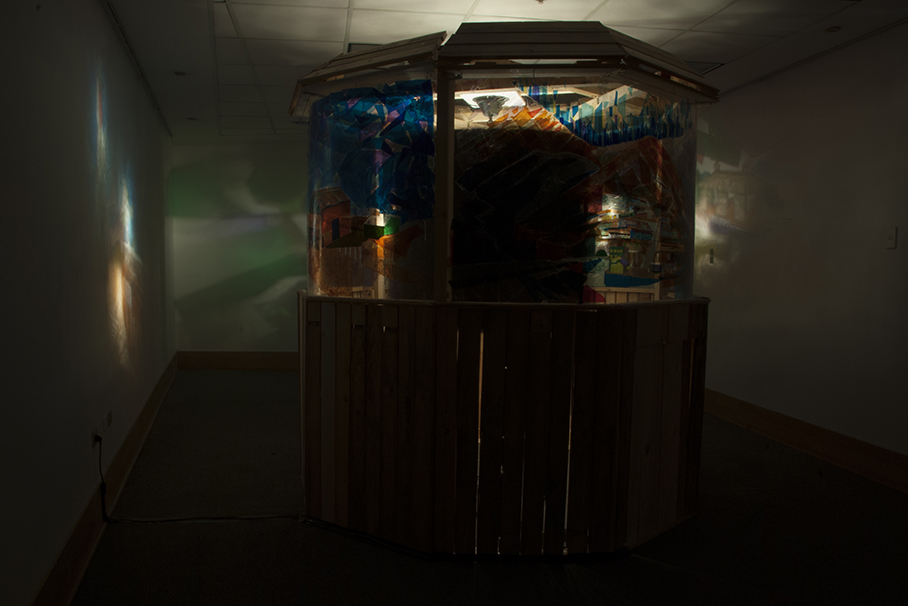
Prisoner’s Cinema
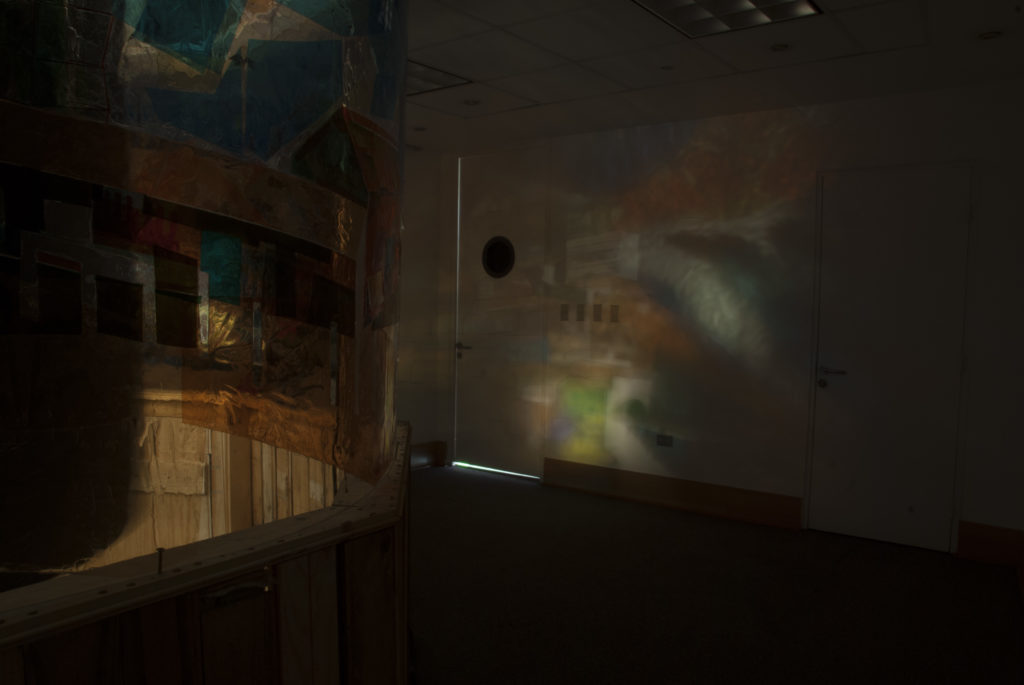
Prisoner’s Cinema
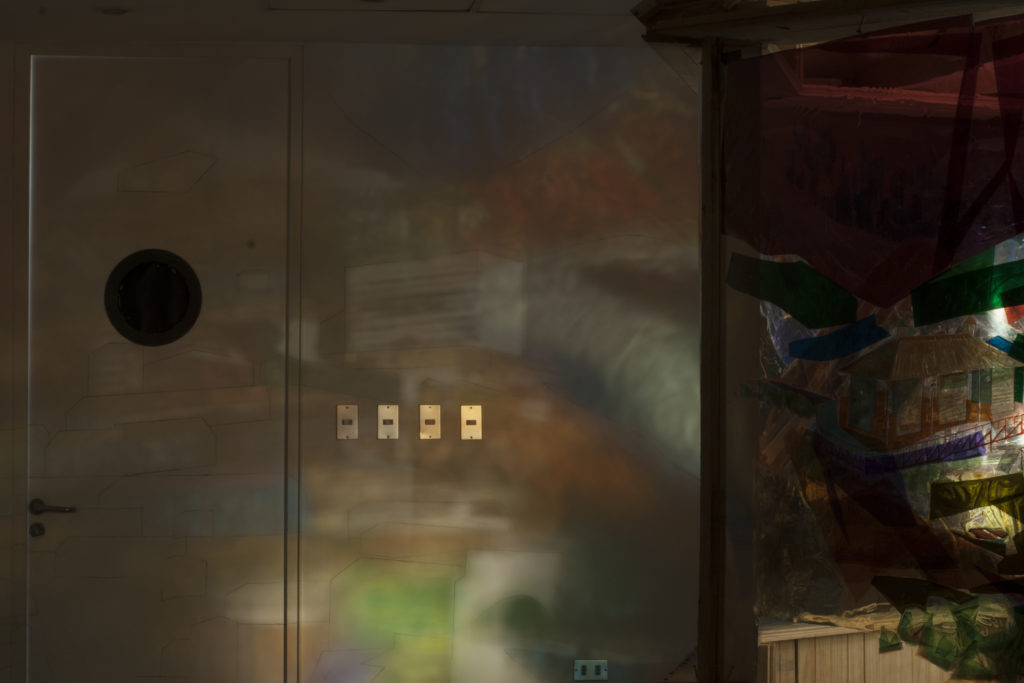
Prisoner’s Cinema
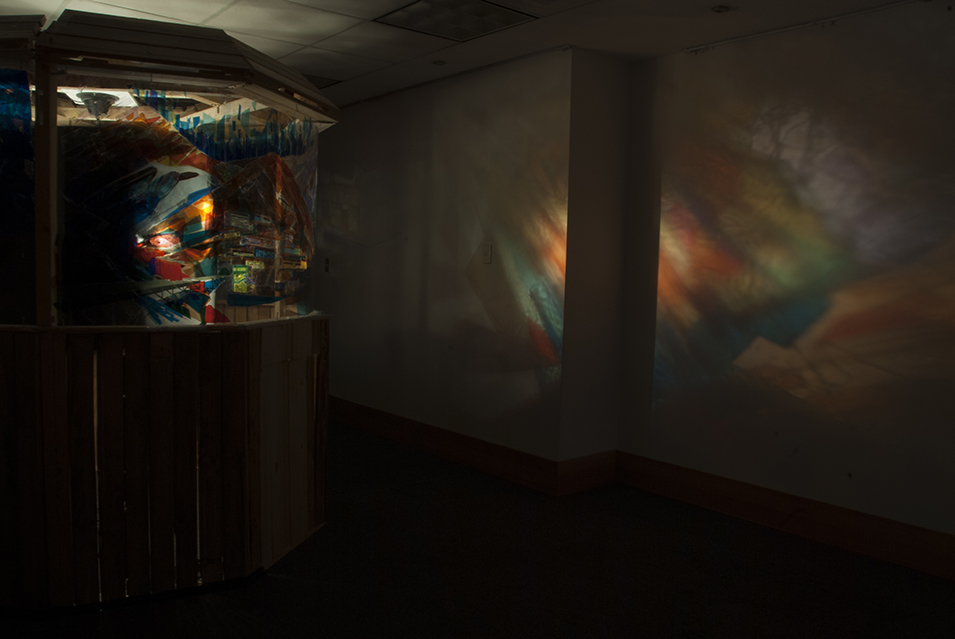
Prisoner’s Cinema
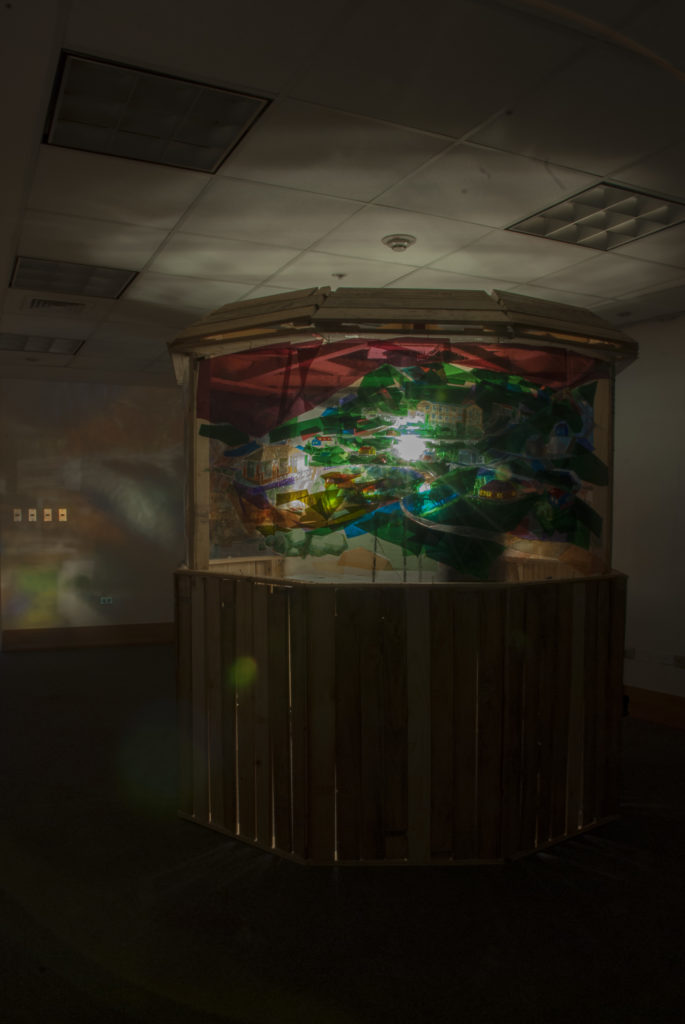
Prisoner’s Cinema
Of Humberstone, Sewell, and Caleta Tortel…
Humberstone is a former Saltpetre (nitrate) company town located in the Atacama Desert. The settlement, founded and operated by a foreign (British) company, was operative during the late XIX century and the first half of the XX century. After the discovery of artificial Nitrate, Humberstone’s activity declined and eventually the settlement shut down in 1960. Now a UNESCO World Heritage Site, Humberstone is a ghost town standing in the middle of the desert. It is not just an architechtural landmark, but a beacon reminding us of the demise of an economic model all too familiar in Chile; A foreign company settles in the country, extracts natural resources, exploits the workers (in the case of the Salpetre villages to the point of modern slavery), pays very little taxes compared to their income, and leaves the country once it becomes less profitable.
Sewell tells a slightly different story. Although founded by a North American company, it soon became a part of CODELCO, a Chilean Copper mining company. Built on a mountain slope deep in the Andes, Sewell’s beautiful architecture of houses linked by stairs in a village with hardly any roads also gained the settlement the status of UNESCO World Heritage Site. Hidden under the architectural beauty is the reality of living in the settlement. Abandoned in 1977, former residents are still around to tell the story of how it was to live and grow up in a village just steps away from what used to be the largest underground Copper mine in the world. In the settlement that used to house 16000 people, illness and contamination are evident. Houses are arranged in a breath-taking but eerily barren landscape. The miners and their families conveniently lived their lives at the edge of a Copper mine with limited rail access to the valley towns for over 70 years before families were finally and slowly relocated to nearby, unpolluted, villages and towns.
Caleta Tortel is located on the southernmost extreme of the Panamerican Highway. It is situated on a fjord at the mouth of the Baker river. Because of its inhospitable location, the village is built on stilts. Houses stand on pillars; there are no roads, but walkways which stand on stilts as well. Public areas such as squares and bandstands follow the same architectural rule. This simple, yet fascinatingly beautiful solution allows for water in the fjord to rise without affecting (or flooding) the village or its “roads”. Since its foundation in 1955, villagers have lived from the extraction of Cypress wood. The adjoining channels are used to transport the timber from the different islands, to Tortel, and then abroad. Most of the village’s income comes from this relationship with its fjord surroundings. Some of the villagers farm small plots of land. This particular architecture and way of life are being threatened by a new hydroelectric project. Half owned by foreign capitals, and half owned by one of the most powerful Chilean families, the Hydroaysen project proposes to build 5 mega dams on the Baker river. This project (and its transmission line) not only threaten to flood a pristine, untouched Patagonian ecosystem, but the partial draining of the fjord also threatens the income and way of life of the people from Caleta Tortel.
In this project, light becomes a metaphor for knowledge. Placing these three villages on the same level enables their context and histories to dialogue with each other. Humberstone and Sewell seem to predict the future of Tortel. The light that trails through the room merges these images, but at the same time they become fleeting and unattainable. How can sustainability and conservation compete with the interests of economic growth?